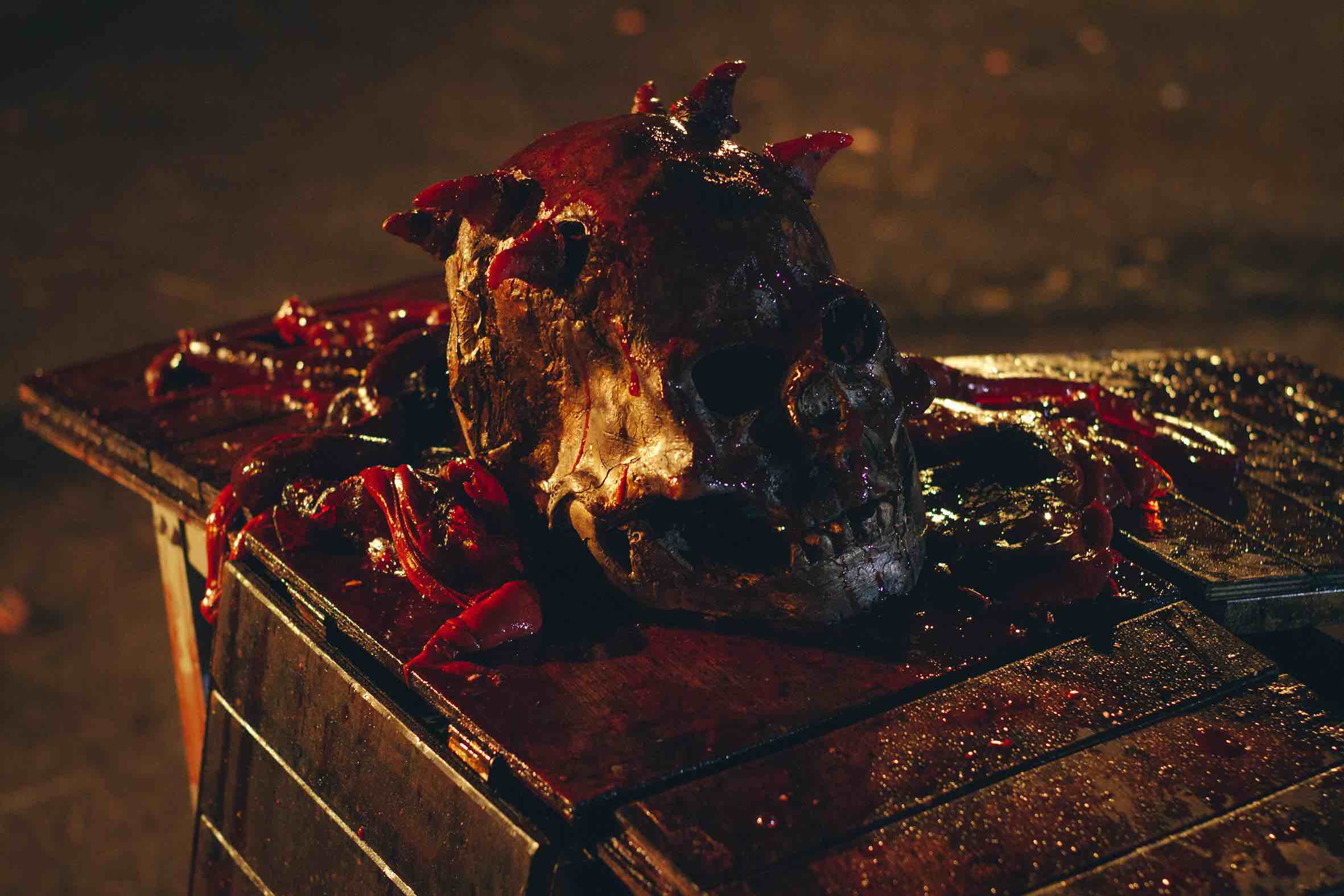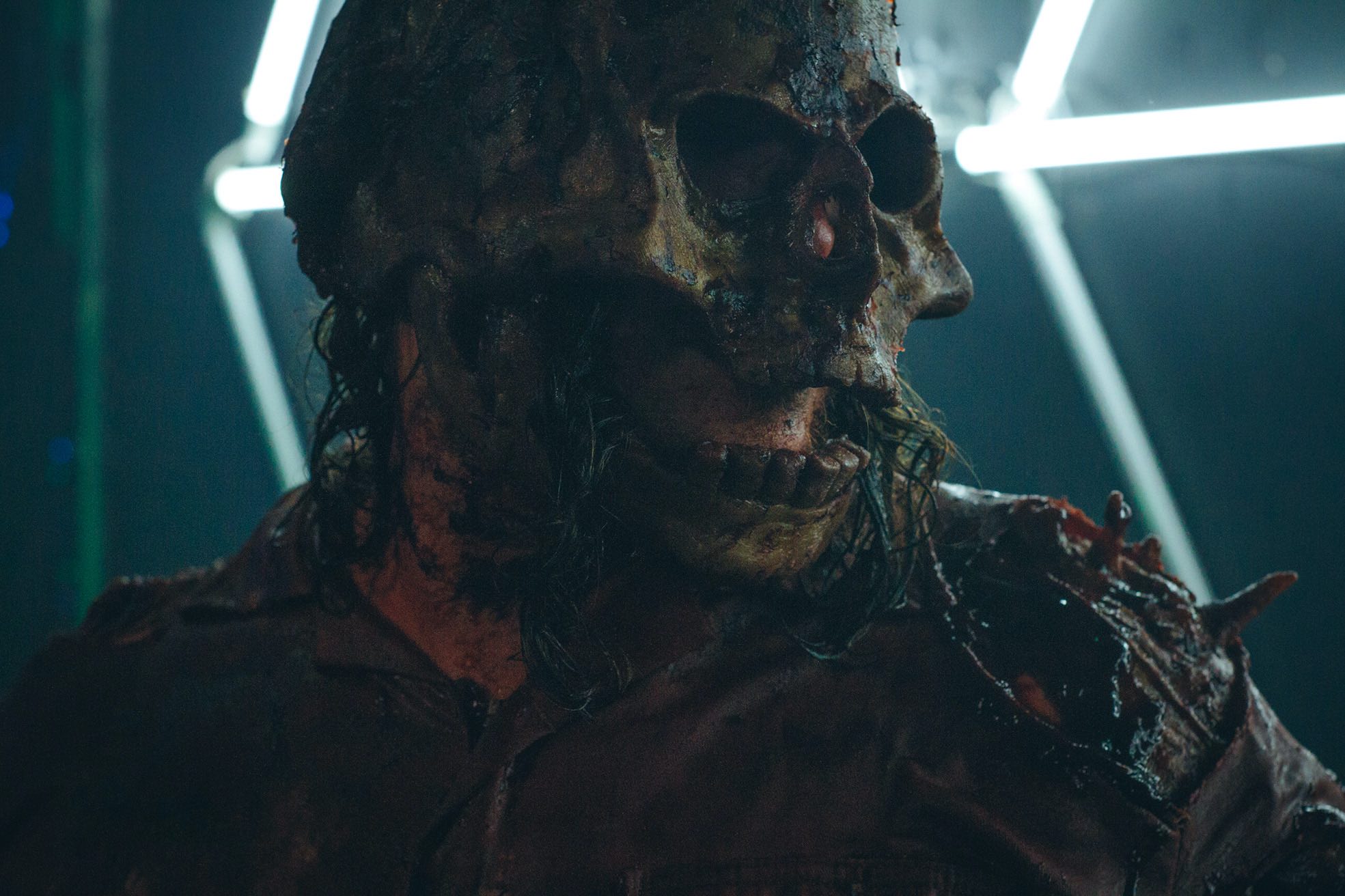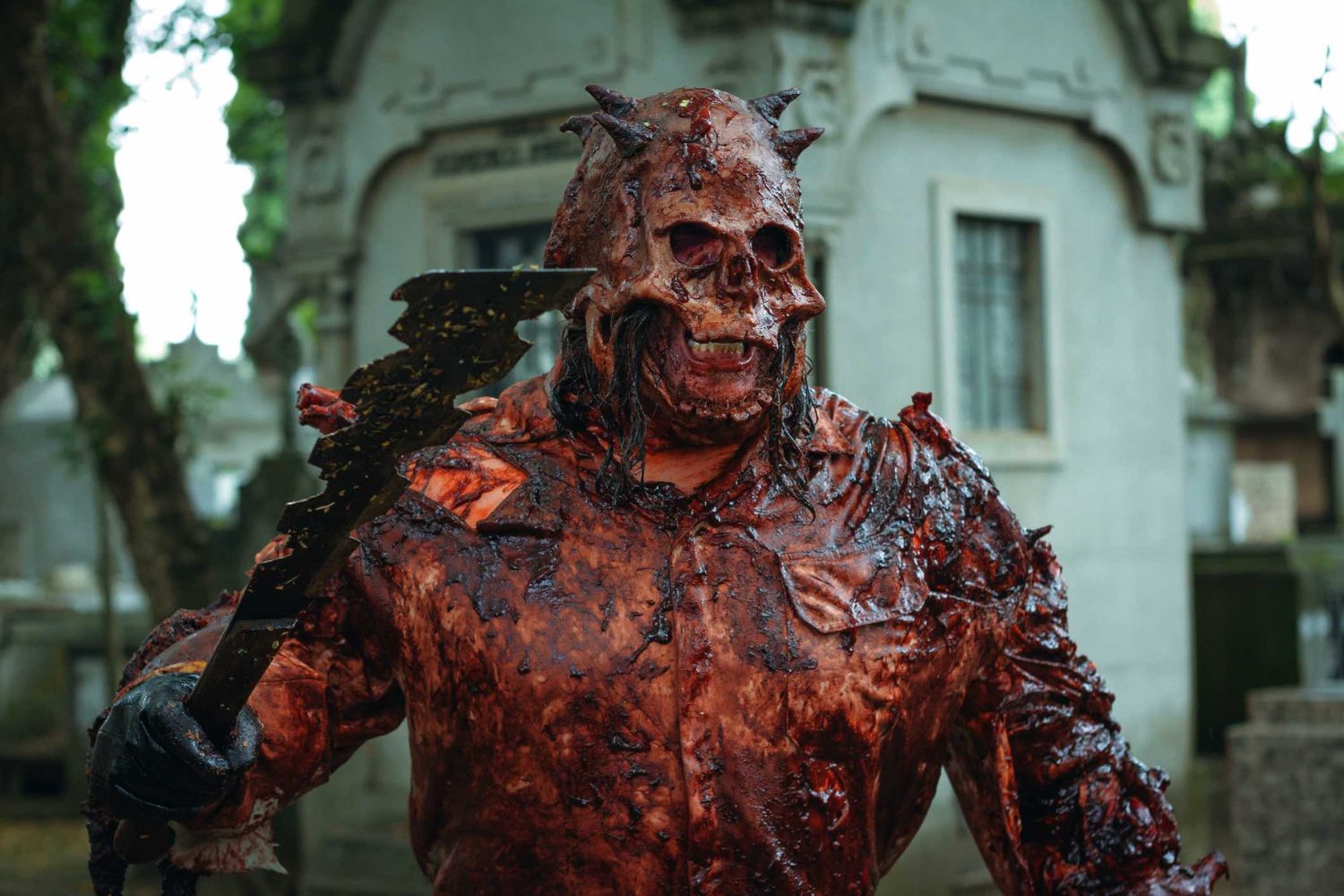Skull: The Mask is said to be based on pre-Colombian mythology, so let me make one thing clear: I don’t know a goddamn thing about pre-Colombian mythology. I know a bit about slasher flicks, though. So when I heard about a new Brazilian entry into my favorite subgenre promising a “city-wide bloodbath,” I was eager to check it out. And while my overall feelings are certainly mixed, one thing is for sure: no one can accuse Skull: The Mask for not delivering exactly what it promises.
Skull kicks off in 1944. The military attempts to use something called The Mask of Anhangá to do… something. Who is Anhangá? Here’s how co-director, Kapel Furman, describes him:

“A demon from the 4o circle [sic], he’s the guardian of the portal that leads to the Inferior World. He serves a higher entity, Tahawantinsupay – The Entrails Collector of the Four Worlds. He’s present in several Andean Pre-Colombian mythologies assimilated by the Inca Empire in the 15th century. His name is “T’uxlu”(skull) in the Quéchua language.
The mask has appendices like sharp-nailed fingers on top of its head – used for locomotion and to rip off hearts when out of a human body.[sic] When the mask is worn by a human being, his personality disappears, and the entity takes his place. Violent and bloodthirsty, the demon can use different weapons, however, he’s not smart, and can’t even speak, limiting himself to grunts.”
It’s a lot to wrap your head around, I know.
Anyhoo—the experiment in 1944 fails, and the film quickly jumps to present day. The Mask arrives in Sao Paulo, possesses a human body, and then begins to commit insane acts of violence in the name of its God. It’s a wildly cool concept. Unfortunately, the finer points of this rather grand narrative are never really explained to the viewer—and if they were, it certainly wasn’t done in a way in which I could follow. Worse yet, all of this pre-Colombian lore and mythology is crammed into a rather generic detective drama side-plot. But, to be honest, I came here for the city-wide bloodbath, so let’s talk more about that.

… a bloody and bold attempt that doesn’t quite realize its potential, but holy shit are the kills cool.
Whatever Skull may lack in terms of clarity, it almost makes up for on the strength of its ambition alone. I’m talking about dozens of locations, choreographed fight sequences, tons of extras, and remarkably gross practical effects. Every time the blood and gore are given a chance to shine, they steal the show. If you’re a SFX nut, you owe it to yourself to check this one out. But that’s sort of the problem with Skull. Other than stellar SFX work and radical creature/killer design, there’s not much else to sink your teeth into—or rather, there’s simply too much to sink your teeth into, making it sort of impossible. That’s a real shame for a film that revolves around so much cool mythology.
There’s a lot to like and appreciate here, but Skull‘s ambition ultimately gets the better of it. It’s all a bit too scattered as the focus switches from bloodthirsty monster wreaking havoc on the streets of Brazil to strange corporations and police drama. The final product suffers as a result, both technically and narratively. It’s a bloody and bold attempt that doesn’t quite realize its potential, but holy shit are the kills cool.
Skull: The Mask screened at the 2020 Chattanooga Film Festival. If you want to check this one out for yourself, or any of the other films at this year’s special online-only festival, vist: www.chattfilmfest.org/badges (U.S. residents only).

[CFF 2020] ‘Skull: The Mask’ is a Brazilian Slasher with Buckets of Gore































